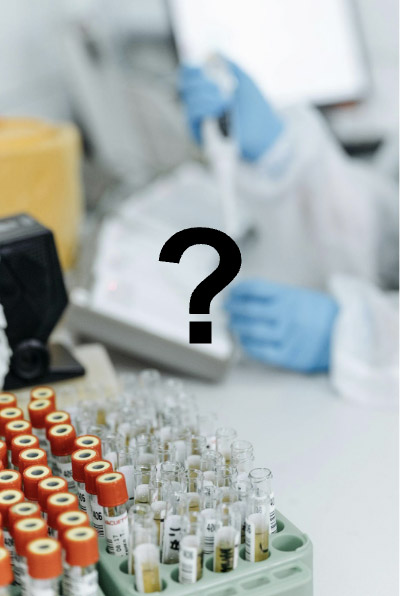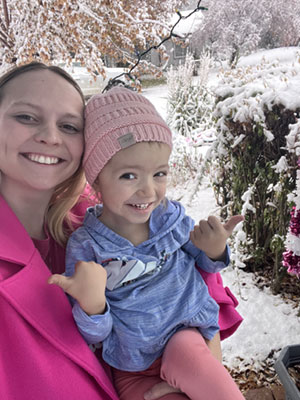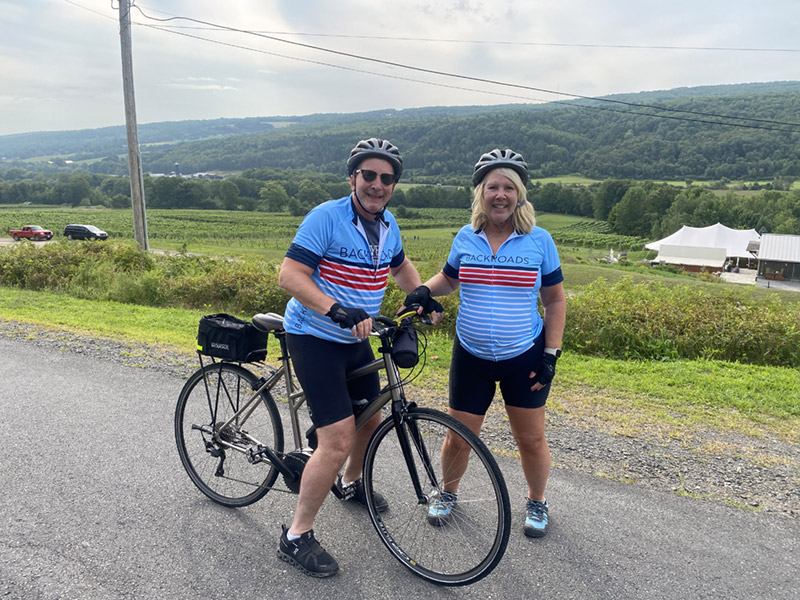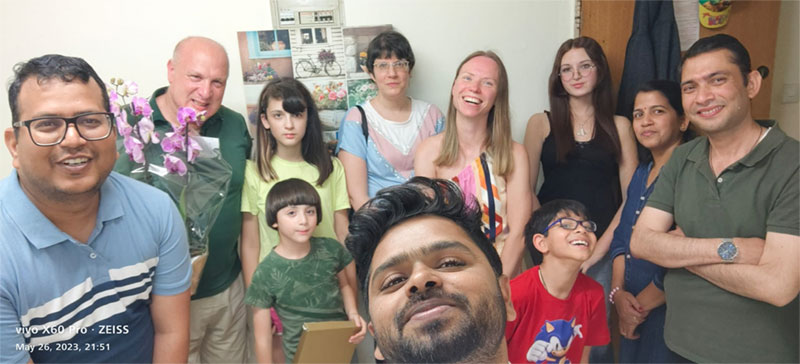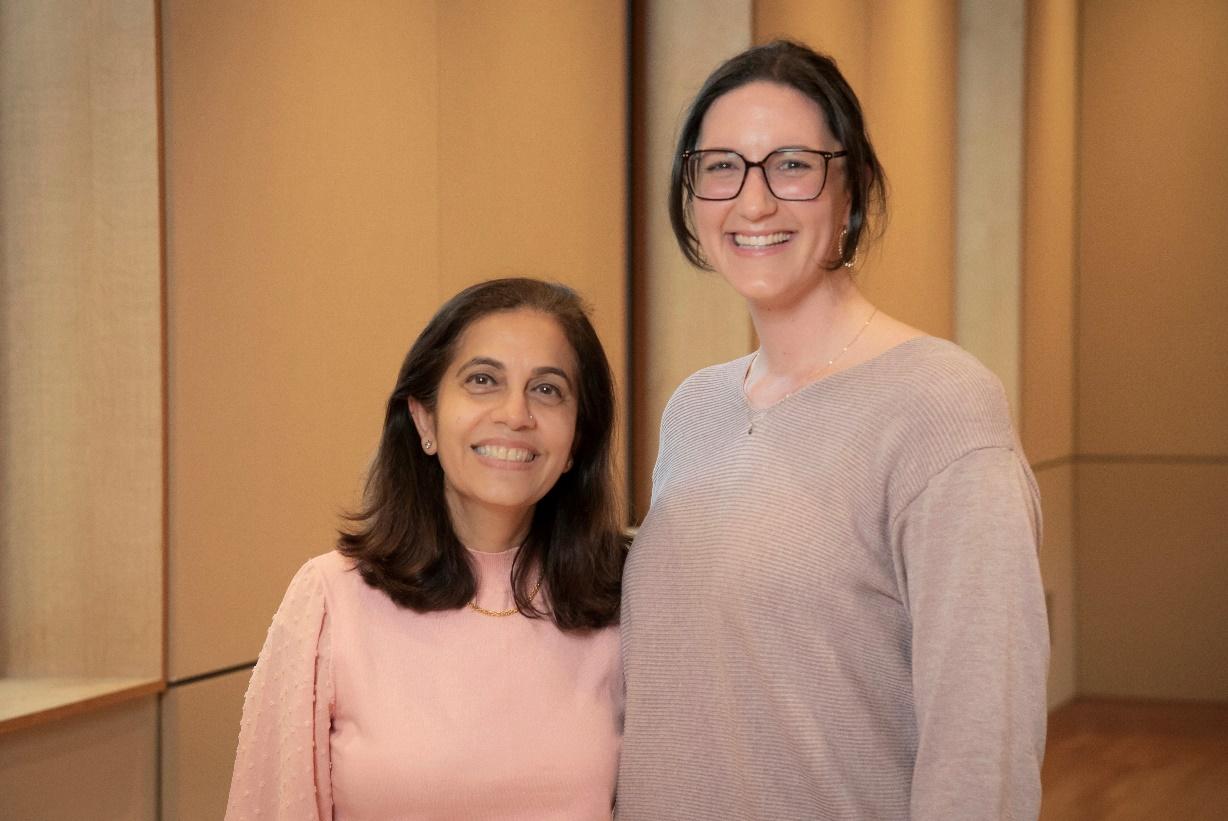We’re honored to feature a Q&A with Dr. Amy Williford, Executive Director of Communications and Donor Relations at the n-Lorem Foundation. With a background as a scientist and decades of experience in strategic communications, Dr. Williford plays a pivotal role in shaping how n-Lorem shares its groundbreaking work with the world.
The n-Lorem Foundation is leading a transformative approach to medicine by developing individualized antisense oligonucleotide (ASO) therapies for nano-rare patients, those with genetic mutations so unique they are found in fewer than 30 individuals worldwide.
In this interview, Dr. Williford offers insight into what makes a disease “nano-rare,” how n-Lorem tailors therapies, specifically for certain patients with APBD, and why patient voices are central to their mission. Her perspective sheds light on the promise and challenges of creating bespoke treatments for some of the world’s most underserved patients.
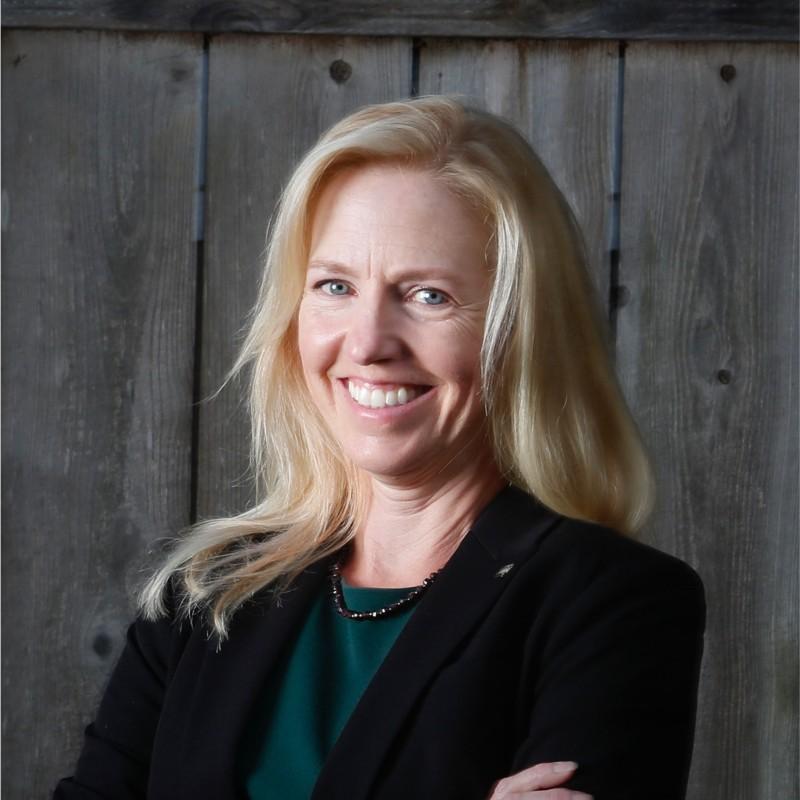
Dr. Amy Williford
What is an ASO?
An antisense oligonucleotide (ASO) is a molecule that can attach itself to RNA, the messenger in our body that helps convert our DNA instructions into proteins. By binding to a specific RNA sequence, an ASO can change the way a gene works. Depending on how it’s designed, an ASO might prevent harmful proteins from being made, help the body produce a missing protein, or correct how the gene is read. ASO therapies are being explored for many rare genetic diseases and are often personalized to a patient’s specific mutation.
Which APBD gene mutation is n-Lorem developing a potential treatment for, and why?
Adult Polyglucosan Body Disease (APBD) can result from an identified intronic mutation found in the GBE1 gene. As a reminder, genes, which are like instruction manuals for making proteins in our body, are made up of two main parts: exons and introns. Like a rough draft, not every word in the instruction manual gets used. Exons carry the actual instructions for building a protein, while introns are typically removed during the cell’s editing process.
If there is a mutation in an intron (an “intronic mutation”), this can confuse the cell editing process. When this happens, the cell might include the wrong parts or skip important parts, leading to a faulty protein, or no protein at all. That’s what happens in some forms of APBD.
This intronic mutation is a strong candidate for ASO therapy because it creates an error in how the gene is spliced, or “cut and pasted” together before making the final protein. ASOs can be specifically designed to correct this error, which helps the gene be read correctly and allows the body to make a more functional version of the GBE1 protein. This kind of targeted fix is exactly what ASOs are best suited for.
Do you have the intronic mutation causing APBD? Connect with the n-Lorem Foundation’s ongoing efforts to develop individualized ASO therapies by contacting amy.williford@nlorem.org.
Q: What classifies a disease as “nano-rare?”
Dr. Williford: A nano-rare patient is a patient who has a single mutation in a single gene, and that mutation is found in less than 30 patients world-wide. At n-Lorem, we work on the individual, not the disease, and we focus on discovering, developing, and providing individualized ASO medicines to the rarest of rare patients. The rarity of these patients makes them often the only one in the world with their unique disease, so we coined the term nano-rare.
Q: What does the personalized treatment journey look like for an APBD patient with the intronic mutation, from the initial application by the patient and his/her physician to treatment administration?
Dr. Williford: All of our patients have a unique treatment journey, because they are unique. Their journey with n-Lorem will start with a research physician submitting a formal application to n-Lorem for the treatment of their patient. These applications have had patient identification information removed so we are blinded to patient identity unless our patients engage with us and identify themselves as a patient. Once the application is received, our team conducts a thorough review of the literature, the mutation the patient has, and presents this to our Access To Treatment Committee, which is an extramural committee made up of pharmaceutical executives, physicians, academic professors, patient advocates, and a bioethicist. This committee reviews the information n-Lorem has collected and makes a determination if the patient should be accepted to n-Lorem.
Applications are approved and prioritized based on criteria such as:
- feasibility of developing an ASO treatment for the genetic cause of the disease
- degree of potential benefit of treatment
- practicality of treatment
- availability of physician and institution to treat patient and conduct necessary studies, and other complexities of the condition.
Once accepted, we then work with the physician to obtain whole genome sequencing and patient cells. These will be used in our work to design and test potential ASO candidates in the cells of the patient. Our screening processes enable us to identify the most optimal ASO for that patient out of the 100s of ASOs we have designed. Once a lead ASO is identified, development begins and we conduct the necessary safety studies to support an Investigational New Drug (IND) application with the FDA.
Our team writes and manages all the official paperwork for approval, and works closely with the doctors to understand what treatment goals matter most to the patient and their family. We also focus on learning more about the disease to help others in the same situation. These goals include things we can measure with numbers, as well as how the patient feels. Once treatment starts, we stay in touch with the doctor to track the treatment’s safety and effectiveness.
Q: Why are some APBD mutations good candidates for personalized ASO treatments while others are not?
Dr. Williford: Different genetic mutations affect the GBE1 gene, and consequently the body, in the different ways.
- Gain of function: The gene makes a harmful or toxic protein.
- Loss of function: The gene doesn’t make any protein at all.
- Altered splicing: The instructions for building the protein are scrambled, leading to a protein that doesn’t work properly.
And there are other possible effects too – each mutation can behave differently, which is why we study them so carefully.
Our ASO technology can help fix or adjust how a gene works by targeting it at the level of the genetic alphabet that spells out the instructions for our genes to function. This can help reduce or even cancel out the effects of certain mutations. However, this approach doesn’t work for every type of mutation. That’s why it’s so important for us to fully understand both the gene and the specific mutation involved.
Before deciding whether our treatment approach (called an ASO strategy) might help, we need to know:
- What the gene normally does
- What the mutation is
- Where the mutation is located in the gene
- How the mutation changes the way the gene works
This information helps us figure out whether our strategy is likely to work for a specific patient.
Q: What role do a patient’s experience and advocacy efforts play in shaping n-Lorem’s approach and priorities?
Dr. Williford: Our mission is to create personalized medicines to help reduce the disease burden for our patients. As such, every decision we make in the drug discovery and development process has our patient’s health and safety as the overarching priority. Because we are blinded to patient identity when an application is submitted to n-Lorem, we assign each patient program a random number, but everyone in our organization understands that that number is a patient who is sick and who needs us to do the very best that we can do. Once we have a drug that we believe is the very best medicine we can make for our patient, we work closely with their physician to understand what treatment outcome matters most to the patient and ensure those are incorporated into the final treatment protocol. At n-Lorem, patients inform every aspect of our process.
“At n-Lorem, patients inform every aspect of our process.”
Q: What are the biggest milestones or breakthroughs you’ve achieved so far in your work with APBD?
Dr. Williford: Our biggest breakthrough was the determination that we could treat more than a single patient with the same ASO targeting the GBE1 gene and that this ASO can restore function of the gene. While we typically work with one patient, one gene, one mutation at a time, we want to help as many patients as we can. That we were able to determine an approach which would enable us to treat multiple patients with the same medicine is a huge win.
Q: How does progress made on personalized APBD treatments contribute to the overall understanding and future treatment of the disease?
Dr. Williford: If you build it, they will come. If you have a medicine that has been shown to be effective for the treatment of disease, more patients who could benefit from that medicine are discovered.
With a treatment available, we believe that there will be many more patients who could benefit, and we are committed to helping reach these patients. Additionally, while we are not able to treat the entire APBD community, with the treatment of a few patients, we will — for the first time — be able to assess how effective a treatment that works at the genetic level of disease is. Also, we will be able to determine if we can stop the progression of the disease. And lastly, we may have valuable information on the possibility of regaining lost functions. This information will help inform the broader APBD community, set therapeutic expectations, drive interest in continued research that could lead to more targeted medicines, and drive awareness among larger commercial companies, institutional researchers, and physicians.
This is why bringing the first treatment to clinic is so pivotal. As Dr. Laurence Mignon, Executive Director of Clinical Development, emphasized in a recent conversation about advancing therapies for nano-rare diseases: “The path to the next patient is faster.” Her words reflect the transformational potential of personalized medicine for ultra-rare conditions like APBD: once one treatment proves successful, the momentum to find and help others grows exponentially.
Q: Since n-Lorem develops and provides ASO treatments for free, how do patients and their physicians support the cost of the clinical aspects of treatment administration, monitoring, patient’s (and often the family’s) travel to and accommodations near the clinic?
Dr. Williford: At n-Lorem, we have built an efficient, highly committed and world-class team of drug discoverers and developers that support our mission to create and bring these much needed medicines to the patients who are often abandoned by the health care system. We believe in health equity; as such, nowhere on our application form are questions related to our patient’s economic status or insurance coverage. When we accept an application, we are committing our resources to that patient to create, develop, manufacture, and provide the medicine for free for life without asking any funding support from the family. As a non-profit, we raise funding from external sources to support our efforts.
Today, we have scaled up to meet a growing demand from the nano-rare community and we have the capacity to treat 20 or more new patients each year. Our only limitation is funding support. In order for us to continue to be as aggressive as we are for our patients, we cannot divert our funds to cover institutional costs related to administration and testing or to cover patient travel costs. We regret that this is the case, but today these are our limitations. Additionally, due to operating under the FDA guidance, we only have a pathway to treatment in the US. We rely on our physicians, academic institutions, and patients to help support the cost of treatment. These costs are handled differently between the different institutions.
Q: How is the n-Lorem Foundation’s work funded and how can our community support your mission?
Dr. Williford: As a non-profit, n-Lorem operates on charitable support, so any type of donation, no matter how big or small, will have a profound impact on our mission for our patients. Additionally, as we create medicines for one or two patients, there will be other patients who could potentially benefit from existing medicines we have, so spreading the word about n-Lorem will help us reach the patients who can potentially benefit today and the patients who may be able to benefit in the future.
We also appreciate the willingness of a patient community to embrace those patients who pioneer and go first. Consenting to receive an experimental medicine that has never before been dosed in a human takes a great leap of faith and lots of courage. These patients blaze the path for others, and their experience during treatment gives us valuable information on the disease and what treatment can do.
EDITOR’S NOTE: Our thanks to Dr. Williford for sharing the n-Lorem Foundation’s groundbreaking ASO technology and efforts to make personalized ASO treatment a reality for APBD patients with the intronic mutation.

